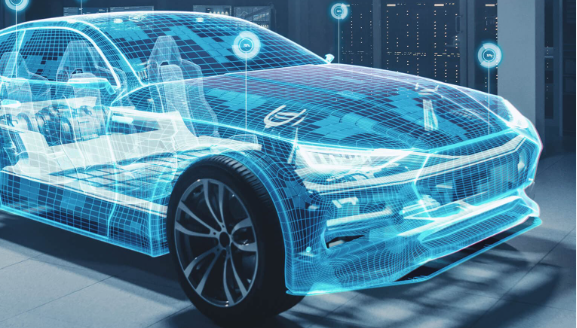
Automotive design has always played a pivotal role in the automotive industry, dictating not only the aesthetics of a vehicle but also its functionality, safety, and environmental impact. However, in today’s rapidly evolving market, the importance of automotive design has taken on an even greater significance. It is no longer just about creating visually appealing cars; it’s about meeting the demands of an environmentally conscious and tech-savvy consumer base. This article explores why automotive design is more critical than ever in today’s market.
Aesthetic Appeal and Brand Identity
Aesthetics have long been a driving force in automotive design. Consumers are drawn to vehicles that not only perform well but also look good. As the automotive market becomes increasingly competitive, a vehicle’s design can be a significant differentiator. A visually appealing design can create an emotional connection with consumers, leading them to choose one brand over another.
Furthermore, automotive design contributes to a brand’s identity. Iconic design elements can distinguish one automaker from another and create a strong brand image. For instance, the classic curves of a Porsche or the bold front grille of a BMW are instantly recognizable and speak to the brand’s values and heritage.
Functional and Ergonomic Design
Modern consumers demand more than just a pretty exterior; they want functionality and convenience. Automotive designers must consider the practical aspects of a vehicle’s design, including interior space, storage, seating comfort, and accessibility to technology. An ergonomic and user-friendly design enhances the overall driving experience and increases customer satisfaction.
Moreover, functional design extends to safety. Automotive designers must incorporate safety features seamlessly into the design, from crumple zones to airbags, to ensure the well-being of passengers and pedestrians. With the advent of autonomous driving technology, the challenge lies in designing interfaces and controls that are intuitive and user-friendly.
Environmental Considerations
Today’s market places a strong emphasis on environmental sustainability, and automotive design plays a pivotal role in addressing these concerns. Designers are tasked with developing vehicles that are not only fuel-efficient but also have a reduced carbon footprint. This means designing lighter vehicles, aerodynamic shapes, and incorporating alternative powertrains, such as electric and hybrid systems.
Additionally, sustainable materials and manufacturing processes are becoming increasingly important. Car manufacturers are exploring eco-friendly materials and production techniques to minimize the environmental impact of their vehicles. The automotive design process now includes a consideration of the entire life cycle of the product, from manufacturing to disposal.
Technological Integration
The automotive industry is in the midst of a technological revolution. Connected cars, autonomous driving features, and advanced infotainment systems are becoming the norm. Automotive designers must integrate these technologies seamlessly into the vehicle’s design. This means creating user interfaces that are intuitive and visually pleasing, as well as ensuring that sensors and cameras are discreetly integrated into the vehicle’s exterior.
Furthermore, electric vehicles (EVs) require innovative design solutions to accommodate large battery packs while maintaining interior space and preserving the vehicle’s overall balance and handling. EV design challenges also include optimizing aerodynamics for extended range and cooling systems for battery temperature control.
Adaptability and Customization
Consumer preferences are evolving rapidly, and the one-size-fits-all approach is no longer sufficient. Automotive design must allow for adaptability and customization. Some automakers are adopting modular platforms that can accommodate different powertrains and body styles, enabling them to respond quickly to changing market demands.
Moreover, personalization is becoming increasingly important. Many automakers offer a range of customization options, from interior materials and colors to technology packages. This allows consumers to tailor their vehicles to their unique preferences and needs.
User Experience
In today’s market, the user experience is paramount. It’s not just about how a car looks, but how it feels to drive and use. Automotive design extends beyond the physical aesthetics and encompasses the overall experience of owning and operating the vehicle. This includes factors such as ease of maintenance, the quality of materials used in the interior, and the functionality of technology interfaces.
Consumers are also placing a premium on comfort, and automotive design must address this. Ergonomic seating, noise insulation, and advanced climate control systems contribute to a comfortable and enjoyable driving experience.
Conclusion
Automotive design has evolved from merely shaping the appearance of vehicles to being a multidimensional discipline that encompasses aesthetics, functionality, sustainability, and technology integration. In today’s market, consumers expect more than just a mode of transportation; they seek vehicles that align with their values, preferences, and lifestyle.
As the automotive industry continues to transform with the introduction of electric and autonomous vehicles, automotive design will remain at the forefront of innovation. It will play a pivotal role in addressing the industry’s environmental impact, integrating advanced technologies, and delivering an exceptional user experience. With consumer expectations evolving and sustainability concerns increasing, the importance of automotive design in today’s market cannot be overstated. It is the driving force behind the industry’s ability to meet the needs of a dynamic and conscientious consumer base.

Leave a Reply